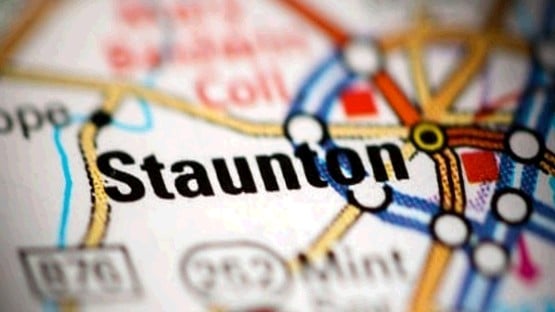
As North Korea develops its capacity to launch long-distance warheads, speculation about the possibility of a nuclear strike on U.S. soil continues to grab headlines. But while it may seem to some like an unprecedented threat to American security, it is not. This scenario has actually been studied since the Dwight D. Eisenhower administration.
Video: www.youtube.com/watch?
Since 2007, the Biocomplexity Institute of Virginia Tech, at the direction of the U.S. Defense Threat Reduction Agency, has used sophisticated computational modeling and analytics to research the complexities of such disasters. After two successive five-year contracts to develop a system capable of simulating and analyzing complex emergency scenarios, the federal government renewed its sponsorship in 2017, awarding a third five-year contract of up to $27 million to continue building this technology.
“There are declassified documents from as far back as 1953 with assessments of nuclear attacks on Washington, D.C.; you can easily find them online,” said Chris Barrett, executive director of the Biocomplexity Institute of Virginia Tech. Barrett, who began his scientific career at the birthplace of the atomic bomb, Los Alamos National Laboratory, was selected by the U.S. Defense Threat Reduction Agency to lead a new approach to National Planning Scenario 1 (NPS1) at new levels of detail to enhance the federal government’s assessment process.
The Federal Emergency Management Agency uses National Planning Scenarios as standards for governmental analytical “dress rehearsals” for large-scale disasters, such as deadly disease outbreaks, coordinated cyberattacks, and, in the case of NPS1, the detonation of an improvised nuclear device (IND) in the heart of our nation’s capital.
Fortunately, Barrett’s team has spent the past five years developing a high-performance computing-based analysis system, specially honed for simulating national security scenarios. This system, the Comprehensive National Incident Management System, or CNIMS, allowed them to do much more than calculate the devastation caused by a hypothetical atomic blast.
Using the historically unprecedented level of data on human behavior captured by today’s mobile communication devices, social media, and web services, as well as more traditional data sources, such as the census and mobility surveys, these scientists were able to represent how survivors might respond in the immediate aftermath of an attack and the implications of their behavior to hone in on the most efficient ways to assist recovery and survival.
“Thanks in large part to the information generated by devices like smartphones, we now have a much more detailed understanding of how a city’s population behaves day-to-day — when and where people are driving, working at the office, shopping, eating, picking kids up from school, and so on,” said Barrett. “Using this information, we can create very detailed simulations of exactly where people are likely to be in relation to a particular destructive point-in-time event, such as an IND; what resources they’d have access to; and examine how their chances of survival can be increased by the full variety of possible responses.”
Projections show that the devastation following an improvised nuclear attack would be unlike anything experienced before on U.S. shores: hundreds of thousands killed, power lines and wired communications systems severed (including some cascading network effects), buildings and streets filled with jagged slabs of concrete, clouds of radioactive fallout.
In the midst of all this carnage, emergency responders and equipment capable of assisting survivors will be miles outside the blast radius, delayed by confusion and misunderstanding, impassable roads, and a host of other life-threatening environmental conditions. The people most likely to offer immediate assistance to those injured in the explosion would actually be fellow survivors already there, perhaps guided by emergency advisories broadcast directly to their mobile communications devices.
Said Barrett: “It is an important notion that we might be able to empower such individuals to be part of effective response and not simply view them as passive victims.” Barrett’s team focused their modeling efforts on identifying the most effective means of supporting these impromptu “first responders.”
“One of the issues that came out in this study was how we would identify areas where a significant portion of the survivors would be capable of assisting the injured people around them,” Barrett continued. “We found bringing even partial mobile device-based communications back online in the affected area should be key to accomplishing that. Not only can we use those temporary networks to broadcast important safety information, survivors can provide first-hand accounts of conditions on the ground and verify the health status and location of loved ones who may also be at risk: they can become human sensors.”
Leveraging survivors’ mobile phones to help save more lives in the wake of a disaster represents a step up in emergency preparedness that may not have been possible even a decade ago when the first smartphones were introduced. Innovations like these illustrate the importance of simulation systems that can keep pace with emerging trends in the ways humans interact with their environment.
“Our collaborators expect solutions that are smart and responsive, ready to be launched in the real world where conditions are always changing,” said Barrett. “At the Biocomplexity Institute, we’re continuing to develop synthetic populations that move, interact, and respond to stress just like a real community, so we’re prepared to find answers for nearly any scenario, no matter how complicated.”
Around the World in 9 Seconds: The Future of Global-Scale Simulation
This forward-thinking approach to disaster response is culmination of a years-long development process, directed by the U.S. Defense Threat Reduction Agency and carried out by the Biocomplexity Institute of Virginia Tech. Having proven itself as an invaluable resource, not only in NPS1, but the response to major disease outbreaks like the west African Ebola crisis and numerous other analytical problems important to DoD and their interagency partners, the CNIMS simulation and analysis system was renewed for another five years of development in 2017.
This program has helped to create one of the first truly global-scale “synthetic populations,” the person/place-oriented data library technologies that underwrite simulated communities that can be made to mimic the average, day-to-day activities of every person in a state, country, or the entire planet in some detail.
“In principle, every single person on Earth can now become a part of these analytics through the information systems technologies developed in this program,” said Barrett. “That means CNIMS can help us forecast how crisis response plans – and many other policy or system design plans – might benefit people anywhere in the world, not just locally or nationally.”
The Biocomplexity Institute’s new basic “workhorse” computing platform, a 200 teraflop data center, is essential to develop simulation methods at this massive scale. It gives researchers the necessary performance to make the analytical tools a critical practical factor in transitioning the research to real-world crisis response systems where planning and analysis need to be conducted quickly.
“We’ve carried out a CNIMS study where we simulated an epidemic involving every person in the United States over the course of 200-day period,” said Barrett. “With over 300 million diverse agents and a similar number of locations involved, we were still able to generate a forecast in just nine seconds on a large Department of Energy (DoE) computer. For the purposes of emergency response, that could mean planners can commit their resources early on to intervention strategies with the highest possibility of success.”
The Biocomplexity Institute regularly conducts research through federal, state, and industry grants and contracts. Notably, this CNIMS development agreement is part of the institute’s portfolio of research programs, which has received more than $103 million in new awards in the first half of fiscal year 2018.
Lessons Learned in 64 Years of Simulating The Bomb
On April 24, 2017 the federal government completed its first “rehearsal” for a nuclear attack under the new Trump administration. While Project Gotham Shield was aimed at preparing government officials for a strike on New York City rather than D.C., federal agencies did consult Biocomplexity Institute experts on key factors they should consider for their study.
Here are a few points they determined to be crucial for assisting survivors:
Communication is Key
In the wake of a disaster, people want to know what’s going on. Since a nuclear blast is likely to wreak havoc on our communications infrastructure, Barrett’s team explored various strategies for bringing these systems back online as soon as possible. Their simulation showed that increasing cell towers’ emergency energy supplies and “beaming in” better phone reception using movable relay towers could make a major difference in assisting survivors.
“By just boosting our communications capacity just a little bit, we were able to make the population much more resilient,” said Bryan Lewis, a research associate professor who headed up the Biocomplexity Institute team’s public health modeling efforts. “Improved communication produced a cascade of positive effects, since people were able to panic a little less and take more focused action, getting to hospitals for instance, or locating evacuation areas more quickly.”
Expect Extreme Travel Risks
While some big buildings are likely to weather a nuclear attack, scientists expect most roads within the blast zone to be extremely treacherous. Immediate evacuation or seeking out help may be instinctual responses in an emergency, but the risk of travel within the affected area will likely be much higher than the reward.
“This isn’t just some rubble in the street. It’s 20 to 30 feet of glass, steel, and concrete, gas flames coming out of broken pipes, live electrical wires, radioactive fallout,” said Barrett. “You can get hurt just trying to move, and it’s not clear where you are even. Familiar landmarks may be gone and, radiation aside, you can easily be injured just trying to move around.”
Secure Shelter Can Save Lives
For those who grew up in Cold War America, “shelter in place” may evoke those darkly humorous PSAs screened in school assemblies where students ducked under their desks to avoid the impact of a nuclear blast. But a sturdy, well-insulated structure can actually provide a much-needed defense against the harmful effects of radiation.
“One intervention we can imagine is that authorities will send emergency broadcasts directly to people’s mobile phones informing them of what has happened and advising them to shelter in place,” said Samarth Swarup, a research assistant professor at the Biocomplexity Institute who specializes in modeling human behavior. “In an attack on a city, there should be many large, strong buildings around which will be relatively intact, providing effective shelter from radiation if people can get inside them.”










